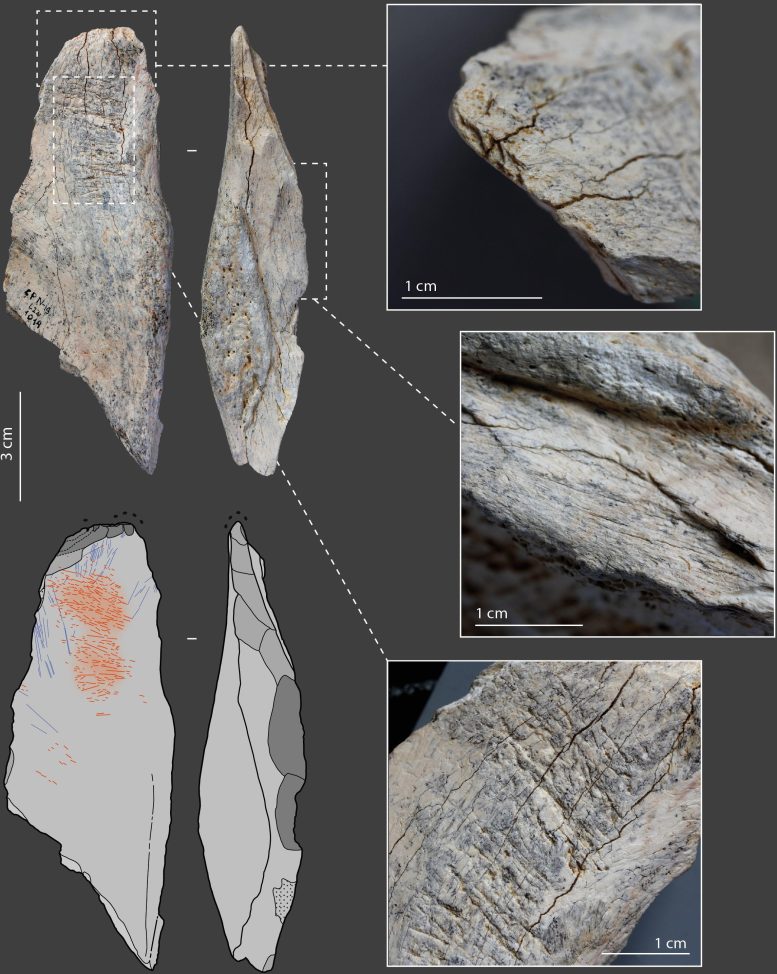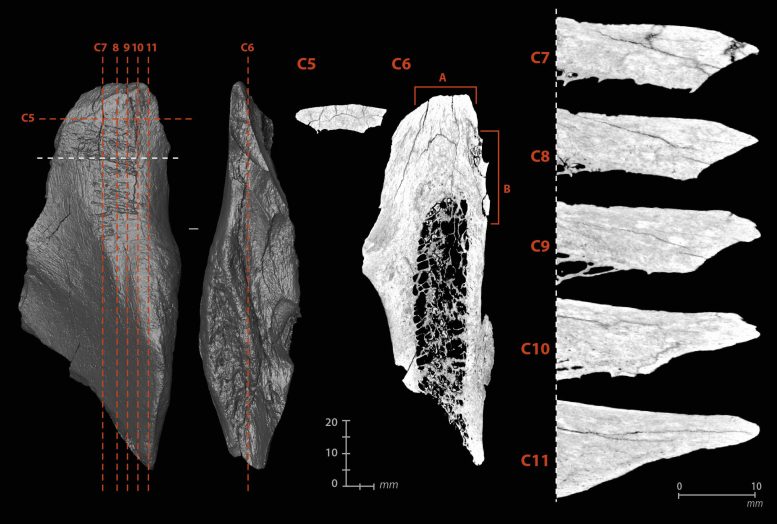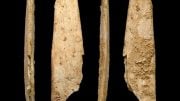
New excavations at the Chez-Pinaud-Jonzac site reveal that Neanderthals, like modern humans, had a diverse bone tool industry, challenging assumptions about their technological and cognitive limitations. (Artist’s concept)
Similar to contemporary humans, Neanderthals crafted and utilized bone tools for their daily needs.
Were anatomically modern humans the only ones who knew how to turn bone into tools? A new discovery at the Chez-Pinaud-Jonzac Neanderthal site by an international research team puts this question to rest. Published in the journal PLOS ONE, the findings illuminate a little known aspect of Neanderthal technology.
Starting from 45,000 years ago, anatomically modern humans began to appear in Western Europe, eventually replacing the last remaining Neanderthal communities. This period also marked significant shifts in material culture, notably the introduction of a wide array of bone artifacts—ranging from hunting tools and decorative ornaments to intricately carved figurines—by modern human groups.

Multi-functional bone tool, retouched on one of its edges, used as a retoucher and chisel. Credit: M.Baumann-TraceoLab-ULiège
Their absence from Neanderthal sites has led to the assumption that these groups did not produce bone tools and implements, sometimes inferred to reflect cognitive differences between the two populations. Since Neanderthals did not know how to process this raw material, they were limited to picking up bone fragments amongst butchery remains, using them uniquely as retouchers for shaping flint tools.
New excavations at the Neanderthal site of Chez-Pinaud-Jonzac (Charente-Maritime), carried out by an international team since 2019, have made it possible to reconsider this assumption. Current studies have shown that bone tools are as numerous as flint ones. Moreover, their diversity provides evidence for a genuine industry that consists not only of retouchers but also of cutting tools, scrapers, chisels, and smoothers, used for various activities and on multiple materials.

Micro-tomographic views of the internal damage of the multi-functional tool. Credit: M.Baumann – TraceoLab-ULiège & Nicolas Vanderesse – CNRS
These bone tools are identifiable based on traces of manufacture and use present on their surfaces as well as within the tools themselves using X-ray microtomography. Unlike examples made by modern humans that are generally shaped by scraping and abrasion, these tools were primarily made by percussion.
The discovery of a bone industry at Chez-Pinaud-Jonzac is consistent with evidence uncovered a few years earlier by the same team at the Neanderthal site of Chagyrskaya, in the Siberian Altai. These two sites, located on either side of the Neanderthal range, testify to the fact that, like modern humans, Neanderthal made and used bone tools for their daily needs. They had the know-how to process bone using their own techniques and for their own purposes. Bone tools represent a new means for exploring and understanding Neanderthal technology, which has apparently not yet revealed all its secrets.
Reference: “On the Quina side: A Neanderthal bone industry at Chez-Pinaud site, France” by Malvina Baumann, Hugues Plisson, Serge Maury, Sylvain Renou, Hélène Coqueugniot, Nicolas Vanderesse, Ksenyia Kolobova, Svetlana Shnaider, Veerle Rots, Guillaume Guérin and William Rendu, 14 June 2023, PLOS ONE.
DOI: 10.1371/journal.pone.0284081
The study was funded by Marie Sklodowska-Curie Actions, the Russian Science Foundation, the Russian Foundation for Basic Research, the Fondation Maison des Sciences de l’Homme, the Ministère de la Culture, and the European Research Council.









Be the first to comment on "Challenging Assumptions: Scientists Unearth Untold Technological Secrets of Neanderthals"